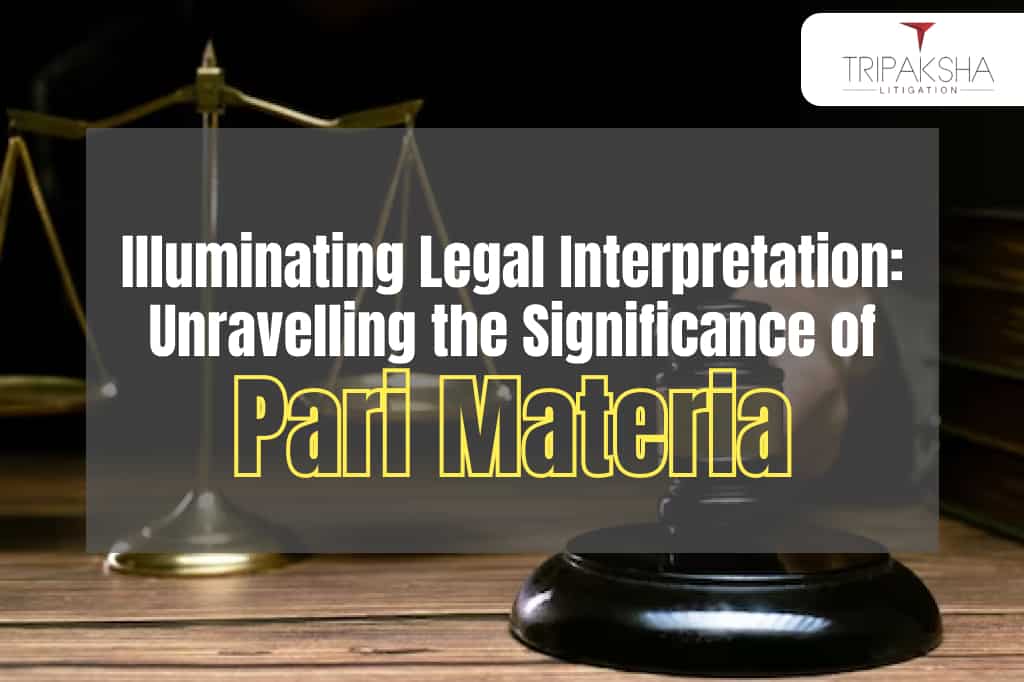In the intricate web of legal interpretation, statutes serve as guiding lights, illuminating the path toward justice and equity. Yet, within this labyrinth of laws, the doctrine of Pari Materia emerges as a guiding principle, offering clarity amidst complexity. Join us on a journey as we unravel the essence of Pari Materia, exploring its significance, applications, and implications in the realm of statutory interpretation. Understanding Pari Materia Pari Materia, derived from Latin roots meaning “on the same subject matter,” embodies the principle that statutes addressing similar objectives are to be construed together. At its core, this doctrine reflects the intent of legislators to create a cohesive legal framework where related laws harmonize to achieve common goals. When confronted with ambiguities in statutory language, courts invoke Pari Materia to interpret provisions in a manner consistent with the overarching legislative purpose. Exploring Key Considerations For those venturing into the realm of statutory interpretation, understanding the nuances of Pari Materia entails grappling with several key considerations:
- Collective Titles: Acts grouped under a collective title signal a shared legislative focus, indicating common subject matter and intent.
- Joint Construction: Statutes mandating joint interpretation underscore lawmakers’ intent to treat related provisions as interconnected components of a unified legal regime.
- Identical Short Titles: Acts sharing identical short titles, except the calendar year, signify a continuum in addressing specific subject matters over time.
- Similar Subject Matter: Acts addressing analogous subject matters along comparable lines are recognized as falling within the ambit of Pari Materia, fostering consistency and coherence in interpretation.
Insights from Case Law Drawing insights from pivotal case laws sheds light on the practical application of Pari Materia
1. J.K. Steel Ltd. vs. Union of India and Ors.: The Supreme Court’s emphasis on statutes in Pari Materia as constituting a unified legal code underscores the interconnectedness of related laws and their role in mutual interpretation and enforcement. 2. C.A. Abraham vs. I.T.O., Kottayam: Judicial inclination towards interpreting fiscal statutes favourably to taxpayers highlights the equitable application of legal principles within the framework of Pari Materia. 3. Minority Opinions: Minority opinions, such as those seen in the J.K. Steel case, offer nuanced interpretations based on contextual factors, enriching legal discourse and understanding.
Conclusion: As we conclude our exploration of Pari Materia, it becomes evident that this doctrine serves as a cornerstone of statutory interpretation, guiding courts toward coherent and equitable judgments. By fostering consistency and harmonization among related statutes, Pari Materia ensures the faithful realization of legislative intent. As legal practitioners and scholars embark on their journey through the intricate landscape of statutory interpretation, a nuanced understanding of Pari Materia promises to illuminate their path, enabling them to navigate complexities with confidence and clarity.
You may contact me for consultation or advice by visiting Contact Us and Call us

